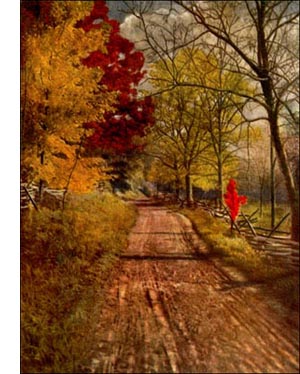Black Haw Tree
 Black Haw (C. Douglasii, Lindl.)-Round-headed tree, 30 to 40 feet high, or many-stemmed shrub, with slender, stiff twigs. Thorns stout, acute, 3/4 to 1 inch long, red, becoming grey. Bark red-brown in oblong, scaly plates. Wood hard, tough, heavy, rose coloured, with satiny grain.
Black Haw (C. Douglasii, Lindl.)-Round-headed tree, 30 to 40 feet high, or many-stemmed shrub, with slender, stiff twigs. Thorns stout, acute, 3/4 to 1 inch long, red, becoming grey. Bark red-brown in oblong, scaly plates. Wood hard, tough, heavy, rose coloured, with satiny grain. Buds blunt, 1/8 inch long, scaly, shining, brown. Leaves obovate to oblong-ovate, acute, finely serrate, on irregular incised lobes; occasionally with two deep sinuses nearly cutting the blade in two; base tapering to short, stout petiole; smooth, dark green, leathery, paler beneath; 1 to 4 inches long.
Flowers, May, 1/3 to 1/2 inch across, in leafy cymes; stamens 20, anthers pale, small; styles 2 to 5, short. Fruits black, ripe in August to September, soon falling, globose or oblong, in many-fruited clusters, lustrous, 1/2 inch long; flesh thin, sweet; nutlets slightly grooved on back and front.
Preferred habitat, moist soil of coast and stream borders. Distribution, coast of Puget Sound, Oregon, and California; east on mountains to Montana and Idaho, and south to Colorado and New Mexico. Occurs also in the upper peninsula of Michigan.
This black-fruited thorn tree of the West has been successfully introduced into cultivation in the Eastern States, and proves hardy along the Atlantic seaboard to Nova Scotia. It is well worth cultivating wherever it will grow.